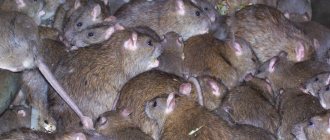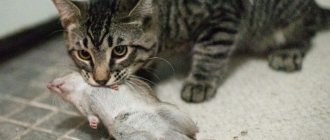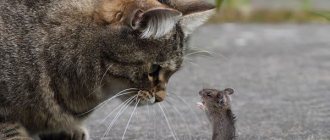Distribution area and habitat of the hedgehog
Hedgehogs are distributed unusually widely throughout the entire territory of our planet.
These unusual animals live in Europe, across a vast territory of Russia, Asia, New Zealand and even Africa. For its life, the hedgehog usually chooses forests, copses, plains with grassy vegetation, steppes, floodplains, near water bodies, and is also found in deserts. He avoids settling only in swampy areas, as well as in coniferous forests. Very often, hedgehogs can be found near human habitats.
Appearance of a hedgehog
The appearance of the hedgehog is very familiar to us all. This is a small animal, up to 30 centimeters long and weighing up to 800 grams. The upper part of the hedgehog's body is densely covered with spines. These are needles up to 3 centimeters long, hollow inside. The hedgehog has a huge number of needles, reaching up to 5 thousand pieces! The needles grow at different angles, forming an impenetrable, thorny mass that poses a serious threat to enemies.
South African hedgehog
The hedgehog's muzzle is elongated, with movable beady eyes, with a wet, movable nose, covered, like the lower part of the body, with dark gray fur. The hedgehog's teeth are strong, the front incisors are more like fangs. The number of teeth reaches 40 pieces.
Ears may vary in size depending on the type of hedgehog. The hedgehog has a tail, but it is small, no more than 3 centimeters, almost invisible from under its prickly fur coat. The hedgehog's legs are short, but the front legs are longer than the back legs. The long toes end in strong claws. With the help of these fingers, the hedgehog cleans its clothing where it can reach.
Ethiopian hedgehog
The hedgehog's vision is not developed, but its hearing and sense of smell are almost perfect. The sounds made by the hedgehog are unusual, reminiscent of snorting and sniffling. The speed at which the hedgehog moves is low, only 3-4 km/hour. The hedgehog's needles change regularly, but they do not change all at once; only a portion of the needles change over the course of a year, so the hedgehog's protective cover is not broken.
long eared hedgehog
Scientists have found that the hedgehog's brain has no convolutions at all. Both hemispheres of the brain are completely smooth. This means that hedgehogs are dumber than mice.
But at the same time, the hedgehog is easily tamed and, with some training, is capable of performing simple tricks.
Extraordinary hedgehog
So, I’m starting a story about useful “wit”. There are about 2 dozen species of hedgehogs. In this article we will look at the habits of the common hedgehog
(from the genus of Eurasian hedgehogs), because it is he who inhabits the territory of Europe, China, Kazakhstan, Western Siberia (up to its northern borders). I note that his more exotic brothers in the family also have a “residence permit” in southern, equatorial countries. So even a baby can answer the question of where hedgehogs live. But we need to talk about his “small” homeland.
It prefers to live in dry or moderately humid areas. Deciduous, mixed and not too dense coniferous forests are his home. And living in a copse, forest edge, or forest clearing is doubly pleasant. Therefore, if there are such natural objects next to the eco-garden, then hurry up and invite the hedgehogs to visit. Hedgehogs can be of great benefit in the garden, as they prefer to eat mainly insects and their larvae. And among the latter there are also many pests: caterpillars, wireworms. But that's not all.
LiveInternetLiveInternet
—Categories
- Jokes about animals (14)
- Forest pests (5)
- Animation, pictures with codes, clipart (28)
- Dishes from forest gifts (159)
- Videos, flash drives (356)
- Mushrooms (208)
- Animal world (3345)
- animals (995)
- Amphibians (140)
- Animal Matrix (443)
- insects (309)
- birds (777)
- Interesting (573)
- Calendar (46)
- Medicinal plants (113)
- Forest in painting (323)
- Forest backgrounds and schemes (67)
- Wild berries (31)
- Myths, stories, legends (40)
- Seas, oceans and their inhabitants (325)
- Our information (43)
- Forest and animal protection (228)
- Paleontology (26)
- The Nature of the World (1577)
- Australia (120)
- Asia (266)
- America (339)
- Antarctica (15)
- Africa (138)
- Europe (335)
- Nature of Russia (533)
- Natural phenomena, climate (277)
- About the forest (stories, stories, interesting facts) (250)
- Forest, mushroom frames (33)
- Plants (585)
- Rivers, lakes (185)
- Fishing (78)
- Poems about fishing, about nature and mushrooms. (101)
- Creativity (97)
- Photos (2058)
- Ecology, eco-facts (75)
- eco-projects (21)
- I am a photographer (reader photos) (330)
Hedgehogs and mice
The most common myth is that hedgehogs eat mice. They may have enjoyed eating mice, but they couldn’t keep up with them.
Children's books are full of pictures of hedgehogs carrying apples or other fruits and vegetables. This is also a myth. They are not able to curl up enough to impale a large object on themselves.
Hedgehogs are very well and quickly tamed. In addition, they get along with pets. For example: dogs and cats. People are reluctant to have hedgehogs at home. After all, they stomp heavily, especially at night.
Interestingly, scientists have proven it. That both hemispheres of a hedgehog's brain are smooth. They are very stupid, but they quickly learn to follow simple commands and even a hedgehog can be trained to use the tray. But hedgehogs always choose a place for a toilet on their own. Only then will people need to put a tray in that place.
An interesting story about the death of hundreds of hedgehogs. McDonald's was the culprit. They made McFest ice cream in wide-necked cups. Hedgehogs could easily stick their heads into the glass, but they couldn’t stick their heads out. Thus, the hedgehogs died of starvation. After environmentalists took up this issue. Ice cream cups have been changed. They made wide necks and now the hedgehogs are safe.
Basic feeding rules
Adults living in the house are recommended to have their own personal food bowls. They should be washed after every meal. It is advisable to train animals to eat in a specific place. They should not eat from the same bowl as cats or dogs, otherwise they may become infected.
You should not overfeed hedgehogs, as this can negatively affect their health. So, a large hedgehog (up to 1 kg) requires approximately 100-150 grams of food per day. Pregnant hedgehogs usually have larger portions; it is normal for them to eat more. It is best to leave the bulk of food for the evening, since hedgehogs are nocturnal animals. Most likely, in the evening they will rustle around in search of treats.
It is not advisable to suddenly change the diet of ornamental or dwarf African pet hedgehogs. If there is a desire to transfer them to ready-made food, then this should be done gradually, otherwise they may refuse to eat or they may develop health problems.
If you want to feed wild hedgehogs at your dacha, then they should also be given a separate bowl where they can put foods approved for hedgehogs. But it’s best to give them fruits, for example, chopped apples or pears - they probably won’t harm street guests.
In general, feeding a hedgehog is not a difficult task if you follow all the recommendations and do not give the animals prohibited foods. Properly fed hedgehogs are usually active, but those that have problems with their diet can behave very lethargically. Animals are also lethargic before the hibernation period begins.
It is important to feed hedgehogs properly until the end of October, after which they go into hibernation for the entire winter. But if the animal is lethargic and this is not due to impending sleep, it is best to consult a veterinarian; perhaps the hedgehog is sick
See below for more details.
How do hedgehogs eat vipers?
An interesting feature of these prickly animals is that their body is insensitive to snake venom. They are also not particularly worried about being bitten by a dangerous enemy, since vulnerable areas of the body are covered with densely planted spines.
Reference. It is believed that there are no snakes in the areas where hedgehogs live.
Defenseless snakes, as well as dangerous vipers capable of defending themselves, can become prey for hedgehogs. How does a hedgehog manage to catch a dangerous viper? When catching such prey, the hedgehog makes a lightning-fast bite of great force and immediately after that curls up into a ball. This tactic allows you to protect yourself from a dangerous retaliatory strike. Next, the animal repeats its trick and continues until the snake is completely weakened. Now the viper becomes easy prey for the hedgehog, which, by the way, is a dangerous and ruthless predator. If you have snakes in your dacha or garden, you should try to lure a hedgehog to your area.
Reference. Some people use a method of fighting snakes called the “drunken hedgehog” or “Hungarian way.” It is necessary to place beer or wine in small quantities on the site in saucers. A hedgehog that has taken to its chest will be mercilessly butchered by seven competitors on its territory.
Hedgehogs are carnivores by nature and are picky about their diet. They are ready to eat everything they manage to catch.
From the heat they throw themselves under the wheels
Hedgehogs do not have a tendency to commit suicide, although many animals end their days on the roads. Hedgehogs try to crawl across highways for a reason. Highways and country roads divide animal habitats into fragments that are too small. Using radio beacons, scientists have found that in the wild animals travel more than a kilometer per night, and the average range of one hedgehog can exceed 20 hectares.
Highways are deadly for hedgehogs. To save animals, environmentalists propose digging tunnels under roads
The usual territory is further reduced by summer cottages and gardens surrounded by fences. Unlike their close relatives, moles, hedgehogs do not like to dig long tunnels, and fences become a serious obstacle for them. In a limited area, animals do not have enough food and material to build nests, and during an epidemic or the appearance of aggressive parasites, the risk of each individual animal to die increases significantly. In addition, constant crossing of relatives leads to degeneration of the population, as genetic anomalies accumulate in it.
Trying to miss their neighbors, hedgehogs crawl onto the highway, and the outcome of such journeys is often sad. In 2006, environmentalists estimated that in the UK alone, at least 15,000 hedgehogs are killed every 12 months. Dutch experts, in turn, concluded that if additional protection does not appear along the highways or they are not equipped with underground tunnels, then very soon the Netherlands will be missing a third of the hedgehogs.
Hedgehogs often visit gardens to eat slugsWhere do hedgehogs winter? How can a gardener help them sleep without anxiety?
Already from the subtitle it became clear that winter is the time of hedgehog hibernation. They look for unique nests for her, but do not engage in construction themselves. Heaps of dry leaves, low-pubescent branches or even secluded corners in lying building materials (boards, slate) - this is where these animals while away the winter. Naturally, their life will largely depend on the temperature outside and on the level of snow that has fallen (it is also an insulating material). To be sure that in the spring adults, and small hedgehogs with them, will again start running around the dacha plot at night, it is better to provide them with comfortable housing.
Knowing where hedgehogs spend the winter will simply help them. To do this, make a covered house from boards (simple, with a flat or sloping roof, approximately 50*40*30 in size), remember about ventilation and an accessible entrance. Place leaves, dry moss and other natural insulation materials in the house.
By the way, if it rains often, then strengthen the roof with clay or put some kind of covering material on it. Place this structure on the same piece of land (preferably even in a small depression) where hedgehogs live nearby. They will definitely like it. You will be confident that the animals are alive and well.
Such houses also provide a guarantee that cats or dogs will not accidentally stumble upon a sleeping hedgehog. They are unlikely to attack it (in the summer this can end very badly for pets), but they can destroy the nest in the harsh season.
And it is important to feed hedgehogs before hibernation so that they have more fat reserves. Do you remember what hedgehogs eat? You are unlikely to catch insects on purpose, but dry and wet food for cats and dogs is a good option. Don't forget to place a bowl of water and pieces of fruit nearby.
So, now you know what hedgehogs eat and, probably, many of you were simply amazed by their diet. And from the information about where hedgehogs live, it became clear that a well-equipped eco-garden is a treasured place for them.
I wish that such an interesting neighbor as the common hedgehog will settle in your garden as soon as possible.
I advise, dear readers, not to miss the publication of new materials on this blog.
Since childhood, we have been familiar with fairy tales and cartoons about hedgehogs, in which the main character stocks up on fruits and mushrooms for the winter. But this is just a made-up myth. In fact, hedgehogs never store supplies to survive the winter.
Both in nature and at home, they accumulate fat, starting in spring and ending in late autumn. To do this, hedgehogs need to eat a lot.
What to feed your pet hedgehog?
Most often he eats the same as his owner. But under no circumstances should you give foods that you eat yourself. Food from the table will kill the animal, and you yourself will not know why the hedgehog died so early. The best food for a domestic hedgehog is specialized food. But it is very difficult to get them in the CIS countries. The best option may be premium cat food, and then only in the first few days. Then you will have to create a special menu for the new tenant.
Products you can feed your hedgehog at home:
Make sure all food is fresh and at room temperature. Be sure to remove any remaining food in the cage so that the hedgehog does not eat spoiled food and get poisoned.
Foods that should not be given to hedgehogs:
- onion and garlic;
- various exotic fruits (all citrus fruits, pineapples, avocados, mangoes and others);
- dried fruits (due to poor traffic);
- grapes (possibility of choking on seeds);
- seeds and nuts (because they are very fatty and the hedgehog will get an upset stomach);
- fast food products;
- milk.
The legend that hedgehogs love milk is very common, but in fact, milk is detrimental for hedgehogs, since their body does not digest lactose. If a long-lived hedgehog lives from 5 to 6 years, then a hedgehog that drinks milk will not live even a year.
Hedgehogs are mammals that can live not only in natural conditions, but also next to humans. Some summer residents try to feed them, hoping that these prickly guests will protect their area from snakes and mice. Whether hedgehogs actually eat mice, you will find out in this article.
Livelihood of hedgehogs
Of the 19 species of hedgehogs found in nature, the common hedgehog mainly lives in our region. It can be found anywhere: in steppes and thickets near rivers, on grassy plains, in plantings and mixed forests. Animals do not settle only in coniferous forests and swampy areas. Hedgehogs do not mark territory, but stick to the boundaries of a specific area, which they regularly survey in the hunt for prey, and live one individual at a time.
The animal's body is covered with needles - keratinized hairs that perform a protective function. Studies have shown that an adult hedgehog has up to 6 thousand spines. The keratinizations perfectly protect hedgehogs from attacks by predators, but at the same time they contribute to the accumulation of ticks and other dangerous parasites on the animal’s body. Long fingers help the animal to independently get rid of insects stuck in the thorns, and the animal has adapted to “remove” those that it cannot reach with the help of fermented fruits, collecting them on its growths.
Hedgehogs are nocturnal animals, they cannot stand the heat; during the daytime they hide in heaps of leaves or cozy nests made of moss, grass and branches.
They build their homes under dry stumps and tree roots. The nests are small in size - about 20-25 cm. Hedgehogs hibernate for the winter, before which they feed heavily and carefully insulate their nests with dry leaves and moss. If fat reserves are insufficient, the animal may die.
In winter, their homes are covered with snow, and the animals sleep peacefully until the first warmth. All vital processes slow down, the number of pulse contractions decreases to 20-60 per minute, and body temperature drops. In April, as the ambient temperature rises and the snow melts, hedgehogs awaken and begin hunting.
About nutrition
Hedgehogs have lived on Earth for more than 15 million years. Science knows 19 species of this animal. On the territory of our country, the most common hedgehog is found. The main feature of the inhabitant of forests and fields is a body covered with needles, the number of which in an adult individual can reach up to 6000 pieces.
The small predator is practically an omnivore:
- the hedgehog hunts lizards and snakes, newborn hares and chicks;
- the animal’s menu includes various insects, worms, slugs, garden snails;
- The animal’s favorite delicacies include the eggs of gray partridge, black grouse or quail;
- The hedgehog also feeds on mice, giving preference.
If we talk about mushrooms and berries, then the animals do not have much interest in them. They are also indifferent to apples. With the help of juicy berries and apples, the animal only tries to get rid of ticks, which quite often appear under a layer of thorns. The acid present in berry and fruit juice repels insects.
Food preferences
Hedgehogs are predators and belong to the class of mammals. In terms of nutrition, they do not neglect anything. These animals are almost omnivorous ; they can eat:
- beetles, earthworms, garden snails, slugs;
- frogs, snakes, lizards;
- mice, baby birds and hares;
- eggs of quail, black grouse or partridge.
Such gluttony and indiscriminate eating stems from the animal’s high activity and the need to create a fat reserve for the winter. The oral apparatus of hedgehogs is designed for processing food of any kind; in the mouth the animal has 20 upper and 16 lower teeth. In addition to animal food, animals also eat plant food (fruits and berries), only in much smaller quantities.
After emerging from suspended animation, hedgehogs are especially in need of nutrition, as their fat reserves are running low. During this period, the animal can eat up to a third of its own weight in feed overnight.
When kept at home, animals eat eggs, meat, and can consume small amounts of bread and porridge. Contrary to popular belief, it is not beneficial for hedgehogs to eat dairy products, since these animals have physiological lactose intolerance. The consequence of such nutrition can be severe digestive disorders.
People have learned to use the gluttony and eating habits of hedgehogs for their own purposes. These animals are natural enemies of rodents and many harmful insects, so they can be of great benefit by settling next to human habitation.
Do hedgehogs hunt mice? Animals are not as agile as cats, so in open areas it is difficult for them to catch a nimble rodent. The main source of food for hedgehogs is insects, but at the same time, hedgehogs bring certain benefits by destroying mouse nests and eating broods.
The very presence of prickly animals scares away mice and rats from human homes and outbuildings. At night, hedgehogs look for burrows of small rodents and patiently wait for them to appear before suddenly attacking the pest.
Features of animal nutrition
There are 19 species of hedgehogs living in nature. In our area, the common hedgehog is more common. He lives in the forest, in the fields. The body is covered with keratinized hairs called quills. In an adult there are about 6 thousand of them.
The animal belongs to the mammal family and is a predator. Regarding nutrition, it seems that hedgehogs are omnivores. Their diet includes:
- earthworms;
- beetles;
- frogs;
- snakes;
- lizards;
Contrary to popular belief, animals do not eat mushrooms or berries and remain indifferent to apples. The main diet consists of insects; occasionally the hedgehog catches mice, especially. and can also become his dinner.
Interesting!
People often use the feeding habits of mammals for their own purposes. In the fight against pests, all means are good, but natural enemies are especially valued, among which are spiny animals. The question of whether hedgehogs eat mice haunts us. It is very convenient to place a couple of prickly animals in the area and forget about rodents in the garden, orchards, and chicken coops forever. In the dark, the animal will slowly begin to eat pests without creating much noise.
Enemies of hedgehogs in the wild
The hedgehog has many enemies in nature: foxes, wolves, snakes, ferrets, kites, martens, eagle owls, etc. When attacked by a predator, the hedgehog defends itself with a bunch of sharp needles in the frontal part, and if the forces are unequal, it curls up into an impregnable ball. The enemy, seeing that the thorny ball cannot be unrolled without injuring the paws and muzzle, gradually loses interest in the prey.
But some predators have quite developed intelligence and are able to come up with methods of fighting hedgehogs. It has long been noticed that a fox tries to throw a hedgehog into a pond, and, waiting until it is forced to turn around to swim, attacks. The eagle owl strives to silently and sharply “fall” from a height, not allowing the prey to come to its senses. Its clawed paws have hard scales that are not afraid of even the sharp spines of a hedgehog.
Snakes, not endowed with special intelligence, certainly play around in a fight with a hedgehog. He has his own tactics: grabbing the snake’s tail, he begins to curl up into a ball and gradually pulls it under him. Snake venom is not scary for hedgehogs. This amazing animal is not sensitive to many aggressive substances: biological fluids of ladybugs, caterpillars, bee venom and Spanish fly toxin. For other mammals, contact with these substances is fatal. It has been noted that even such highly toxic poisons as opium, hydrocyanic acid, sublimate and arsenic will not lead to the death of the animal, although it is sensitive to them.
Due to the large number of predators wanting to feast on the hedgehog, the animal’s life in the natural environment is short, only 3-5 years. In captivity, it can live 10-15 years, but it is believed that this animal is not suitable for keeping at home. At night he rustles, snorts and makes other various noises.
We invite the forest inhabitants to come to us
If you want these wild animals to visit your site at least occasionally, you can take some actions. Tip #1 - bait. If you attract a hedgehog with food, he will not forget it for a long time, because he is such a glutton. Some facts to note:
- hedgehogs are easily tamed;
- omnivorous;
- quickly get used to a person.
Of course, the first contact with a hedgehog may not be successful. Until the animals recognize your intentions, you will not be able to tame them. At first, they can behave quite aggressively - snort, puff, hiss and puff, and if possible, run away. But as soon as they understand that you do not wish them harm, they will change their anger to mercy.
Hedgehog or cat
Science has long known that hedgehogs eat mice. Evidence of such a hunt is provided by eyewitness accounts. Some people even believe that prickly animals cope with this task much better than other predators who eat mice, such as cats.
It's interesting how a hedgehog catches mice. After all, a frankly clumsy animal is not at all characterized by high speed of movement, flexibility, evasiveness and a quiet approach. In addition, while moving, the animal often snorts and rustles its spines.
Conclusion
The ability of animals to catch mice and rats is clearly exaggerated. Indeed, unlike cats, hedgehogs are quite slow and clumsy . They are useful only in terms of destroying the young offspring of mice and rats; they catch adults occasionally, and this is more likely an accident than a pattern. Therefore, it makes no sense to deliberately use hedgehogs to exterminate small rodents. Cats are born mousecatchers; no other animal can replace them.
Did you like the article? Share with friends on social networks:
Source
Spiny Hunter
It’s worth noting right away that there are quite a lot of misconceptions that are associated with these animals, so let’s try to gradually sort them out.
Reference. Many people think that hedgehogs are kind and cute and don’t know how to bite. Agree that when you meet a hedgehog on your way, you will immediately try to touch it, but it seems so defenseless. In fact, he can quite realistically stand up for himself and will bite you quite painfully, and in addition he will infect you with some kind of infection. Hedgehogs, by the way, carry rabies.
So, is it true that hedgehogs are good at catching mice? For some reason, many people believe that this is true and actively try to lure the prickly hunter to their site so that the hedgehogs catch mice. But in fact, hedgehogs are not very good at catching mice.
Why are they not good at hunting small mice? The thing is that hedgehogs have club feet, and when walking they create quite a lot of noise. Despite the fact that the hedgehog runs quite quickly, it makes a lot of noise, so all the mice run away from it. Of course, if he manages to catch a mouse, he will enjoy it with pleasure. How do they manage to catch such a delicacy? Most likely, their prey was somehow sick, lame, or inattentive.
Hedgehogs can also act according to the following schemes:
- They look for mouse holes and stay near them until the mouse crawls out of its house. When the prey sticks its nose out of the hole, the hedgehog quickly grabs it by the neck with its sharp teeth, thereby inflicting a fatal bite.
- Hearing the rustle of mice moving, he hides in the grass. As soon as the prey comes closer to the hedgehog, it grabs it.
Important. There is no need to feed the hedgehog milk to your site. Of course, when he sees the treat left for him, he will drink it, but then he will feel unwell. Do not mock the animal, do not pour milk on it.
Hunting instincts
It has long been known that hedgehogs eat mice. This is evidenced by the statements of scientists; the animals were seen doing this by eyewitnesses.
On a note!
The villagers are trying to appease the animal with milk so that it stays near the house. According to scientific information, this product is contraindicated. The hedgehog develops a terrible eating disorder, which puts the animal at risk of death.
How hedgehogs catch mice remains a mystery to many. They are not flexible, speedy, or quiet. They constantly snort and rustle their spines. The hedgehog hunts only at night and uses its sense of smell. It is very interesting to watch how the animal catches its prey.
There are several hunting options:
- Looks for holes, waits until the mouse appears at the exit. Quickly grabs the neck with sharp teeth and inflicts a fatal bite.
- He hears the rustling of mice and hides for a while in the grass, in a dark place. As soon as the prey appears on the horizon, it strives to catch food.
The small, prickly, clumsy animal is not capable of chasing rodents; in hunting instincts it is much inferior to cats. Prefers a vole, an ordinary gray mouse.
After all, not all cats want to catch mice, maybe this extends to hedgehogs, some catch, some don’t. Or maybe they only catch stupid little mice...
Everyone has seen and knows HEDGEHOGS. These are very quiet and gentle animals. They do not harm anyone and are not afraid of anyone. They sleep during the day and go hunting at night. They destroy harmful insects, fight with rats and mice, and kill poisonous snakes.
HEDGEHOG
For the winter, they make small, comfortable dens for themselves under the roots of trees. On their thorns they carry soft moss and dry leaves into their dens. Hedgehogs hibernate throughout the winter. Their small hidden dens are covered with deep snowdrifts, and the hedgehogs sleep peacefully all winter. They wake up in early spring, when the snow melts in the forest, and go hunting.
HEDGEHOGS ARE NOT COMPETITORS FOR CATS
Despite the fact that hedgehogs often live next to humans, our knowledge about them is not complete. There are many legends about hedgehogs, for example, that they are very good at catching mice and that they can be kept instead of a cat. Meanwhile, in the wild it is difficult for a hedgehog to grab a nimble rodent. Its main food is insects. Hedgehogs eat a lot of all kinds of harmful insects and slugs for the forest. This should also include the destruction of nests in the forest along with broods of rodents that harm agriculture and forestry.
The fame of hedgehogs as exterminators of mice, rats and cockroaches is greatly exaggerated. After all, the hedgehog is rather clumsy; it collects insects rather than hunts them, and only catches relatively slow snakes, frogs and young warm-blooded animals. During the day, hedgehogs usually doze in shelters, under brushwood, snags and inversions, and in indoor conditions - in dark corners under furniture. Active at dusk and at night.
Eating hedgehogs. The hedgehog's main food is, of course, insects, by destroying which it brings so many benefits. But that is not all. The hedgehog catches voles, but quite rarely. The hedgehog is not afraid of the bites of poisonous snakes and willingly eats vipers without any consequences for itself. Research has shown that the hedgehog's body is resistant to other poisons. Sometimes he feasts on bird eggs and chicks of birds nesting on the ground. The hedgehog carries the leftover food into its hole and stores it. He also loves plant foods.
Hedgehogs love milk at any age, so it should definitely be included in the diet of these animals in captivity. Other foods include raw meat, fish, eggs, white bread, earthworms, insects, fruits and berries. An adult hedgehog requires only 100-150 g of food per day. You can drink milk and water. Almost any waste from your table is suitable for a hedgehog.
By September, hedgehogs gain fat and, having reached their maximum annual weight, hibernate. They awaken in early spring, when there is still snow in the forest, thin and even flat on the sides. Having fed, they begin the rut, during which the males enthusiastically fight each other, butting with elongated needles growing above their foreheads.
Have you ever heard hedgehogs talk to each other? Probably no one heard.
But I heard it.
I'll tell you in order. In winter and summer we live in Karacharovo on the bank of the river, in a small house, surrounded on all sides by forest. We go to the forest to watch and listen to how birds live and sing, how forest flowers bloom, how insects fly and crawl.
When I went out onto the porch at night to admire the starry sky and listen to the night sounds and voices, I often heard someone running in the tall grass under the lilacs. I lit an electric flashlight and saw a large hedgehog running away. We often saw hedgehogs in the evenings when the sun was setting: in search of food, they fearlessly wandered around our house, picking up crumbs and what we left for them. Often the hedgehogs approached a large cup of food from which we fed our dogs - the good-natured black Beetle and the cunning Squirrel. Usually Squirrel began to bark touchily and furiously, and her phlegmatic son Zhuk would step aside and remain patiently silent. The hedgehogs climbed with their front paws into the dog's cup and, quietly snorting, calmly ate. Several times I caught hedgehogs and brought them into the house. They were not at all afraid of people, they calmly ran around the rooms and did not try to curl up into a ball. I released them into the wild, and they continued to feed near our house, annoying the dogs.
One dark summer night I was sitting in my room at my desk. The night was quiet, only occasionally light distant sounds could be heard from the river. In the complete silence of the night, very quiet, unfamiliar and pleasant voices were suddenly heard under the floor. These voices were similar either to a quiet conversation, or to the whisper of chicks awakening in the nest. But what kind of chicks could there be in the underground?.. And these gentle underground voices did not resemble the squeaking of mice, the angry squealing of rats. For a long time I could not understand who was talking under my floor. After some time, I again heard the already familiar affectionate conversation in the underground. There, two mysterious creatures unfamiliar to me seemed to be talking to each other.
— How do our children sleep? - said one gentle voice.
“Thank you, our children are sleeping peacefully,” answered another gentle voice.
I thought for a long time, who is talking so affectionately under my desk in the underground? “Probably hedgehogs live there,” I thought. “An old hedgehog comes to his wife and asks her about little hedgehogs.” Every night I heard hedgehogs’ voices underground and smiled: the hedgehog and the hedgehog were talking so friendly!
One evening, when the sun was setting across the river, my grandson called out to me through the open window.
“Grandfather, grandfather,” he shouted, “come out quickly!”
I went out onto the porch. My grandson showed me a whole family of hedgehogs calmly walking along a well-trodden path. A big old hedgehog walked in front, a hedgehog walked behind him, and tiny hedgehogs rolled in small lumps. Apparently, their parents took them out of the nest for a walk for the first time. Since then, every evening the old hedgehogs and hedgehogs went out for a walk on the path. We left milk in a saucer for them. The hedgehogs calmly drank milk together with the kitten that lived with us and grew up.
This went on for several days. Then the hedgehogs went into the forest, and we rarely saw them. At night they still came to our house, drank milk and ate from a dog’s cup, but I no longer heard the hedgehogs’ gentle voices underground.
Everyone has seen and knows hedgehogs. These are very quiet and gentle animals. They do not harm anyone and are not afraid of anyone. They sleep during the day and go hunting at night. They destroy harmful insects, fight with rats and mice, and kill poisonous snakes. For the winter, they make small, comfortable dens for themselves under the roots of trees. On their thorns they carry soft moss and dry leaves into their dens. Hedgehogs hibernate throughout the winter. Their small hidden dens are covered with deep snowdrifts, and the hedgehogs sleep peacefully all winter. They wake up in early spring, when the snow melts in the forest, and go hunting.
Hedgehogs soon get used to people and become tame. A whole herd of hedgehogs has bred in a neighboring pioneer camp. Every night they come from the forest to the pioneer canteen and feast on the food that the pioneers leave for them. Where hedgehogs live, there are no mice or rats.
I once had a pet hedgehog. During the day he climbed into the top of a felted old boot, and at night he went out to hunt for prey. I often woke up from the small stomping and noise that the hedgehog made at night. Two or three times I was able to watch him catch mice. With extraordinary speed, the hedgehog rushed at the mouse that appeared in the corner of the room and immediately dealt with it. Frankly, he caused me a lot of anxiety, prevented me from sleeping at night and behaved uncleanly. Despite all the troubles, we became very good friends. My guests and I really liked some of the hedgehogs' funny tricks. Coming out of his night shelter, he diligently sniffed and examined every crack, picking up small crumbs on the floor. There was something hilariously funny in his movements, his gait, in his small muzzle covered with gray hair, in his small black and intelligent eyes.
Sometimes I would put it on the table and loudly slap the board with my palm. The hedgehog almost instantly curled up into a prickly gray ball. He remained motionless for a long time. Then he began to slowly, quietly unfold. From the sharp gray thorns a small funny and dissatisfied face appeared. He sniffed and looked around. The expression of the former good-natured calm appeared on the muzzle.
A lot has been written and told about hedgehogs. They tell how cunning foxes hunt hedgehogs. The fox quietly rolls the hedgehog curled into a prickly ball from the steep bank into the water, where the hedgehog quickly turns around and the fox easily deals with it. Some smart dogs do the same thing with hedgehogs.
Here's the story. I tried to find the author, but all attempts ended in failure.
Does anyone know whose story this is?
11.08.2012
Greetings curious gardeners! Many people have heard more than once about how hedgehogs stomp on the floor at night and prevent people who keep them as pets from sleeping. But this article is about free hedgehogs who happily visit our gardens in search of food.
Today I want to talk about what conditions need to be created so that hedgehogs in the garden live with pleasure, in freedom and without bothering, and even bring great benefits. To do this, let's first figure out their habitat, or, more simply, find out where hedgehogs live. Of course, you also need to think about what hedgehogs eat. Do they tolerate cold easily and exactly where do hedgehogs spend the winter? Who can harm them? All these questions are important, and after reading the article you will know the answers to them.











